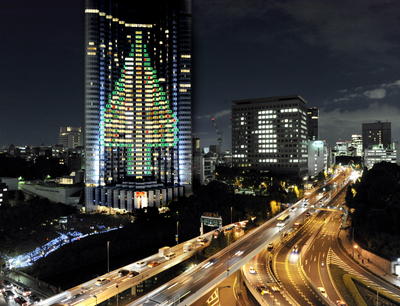The Christmas lights cover the city in a beautiful glow. But while the lights are efficient LEDs, requiring less electricity than conventional bulbs, they make one wonder: is the hype about electricity shortages, with the surge of momentum for reduction in energy demand so strong after 3-11, over? People’s memories of 3-11, it would seem, are fading.
However, statistics demonstrate the ongoing need for further energy-demand reduction and the development of alternative energy sources in Japan. After all, nearly all nuclear power plants have been out of operation for safety checks for the past two years. To make up for the electricity-supply gap, the share of fossil fuels in Japan’s energy mix increased from 62 to 88 per cent in 2012.
The energy strains caused by shutting down Japan’s nuclear power plants also became the justification for the Japanese government’s recently watered-down 2020 greenhouse gas emissions target (announced at COP19 in Warsaw) of 3.8 per cent lower than 2005 levels, which effectively means 3 per cent higher than 1990 world greenhouse gas emissions levels. This is drastically different from the 25 per cent greenhouse gas reduction target the previous government set. The new target was heavily criticised by climate NGOs, though their requests have rarely been reflected in government policy.
But an important change is also underway, with a steady growth of renewables evident in recent data. Photovoltaic (PV) capacity grew from 3618 MW in 2010 to 6631 MW in 2012 wind power marked 2649 MW capacity in 2012, and there are 20 new developments planned for geothermal electricity.
While there are various triggers for this growth in renewable energy capacity, the feed-in-tariff (FIT), introduced in 2012, is one of the most compelling reasons. The FIT provides the guaranteed tariff for renewable power production. Currently, photovoltaics (PV), wind, small-scale hydro, geothermal and biomass are covered and it provides about ¥38 per kWh for PV, ¥23–57 kWh for wind, and ¥27–42 kWh for geothermal, and ¥13-41 per kWh for biomass to stimulate business and public interests. Local governments and energy developers have received growing inquiries from residents who are interested in having renewables at home.
FITs simply signify how important it is to optimise economic incentives for the sake of social and environmental change. But it is not yet clear how long FITs may continue. Crucially, FITs may not be sufficient to introduce enough alternatives to nuclear power, as the overall contribution of renewables for electricity production still remains at merely 1.6 per cent of the total supply. The government has been rather slow to formulate convincing alternative energy visions, and this vacuum of policy decisions creates a mood among government officials to ‘wait and see’ how and whether they should do anything proactive.
The illuminated trees and bright shopping malls, with affluent materials and energy, are shining ever brighter in Tokyo. The government’s energy policy is coasting on waning memories, together with business interests optimising consumer desires to purchase more materials and services over the festive season. But Christmas joy in Japan should not only be for residents of the cities, nor should it be the time to forget Japan’s commitments to a renewable energy future.
Aki Suwa is a research fellow and Joni Jupesta a postdoctoral fellow at the United Nations University Institute of Advanced Studies.

